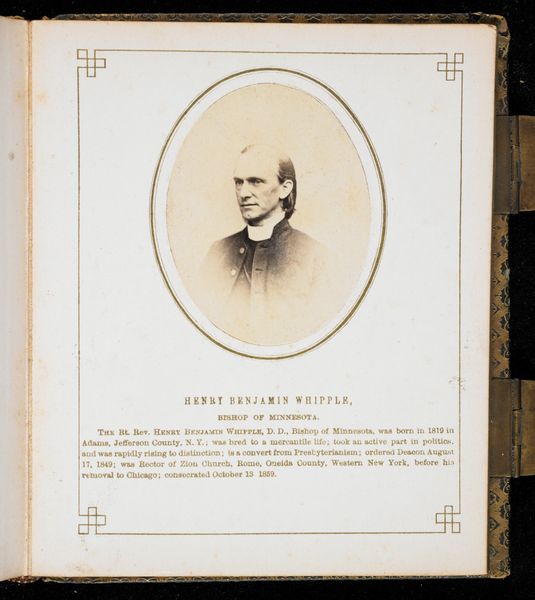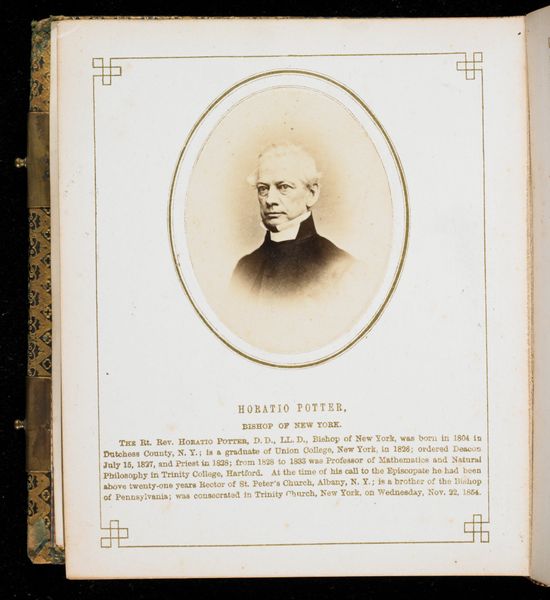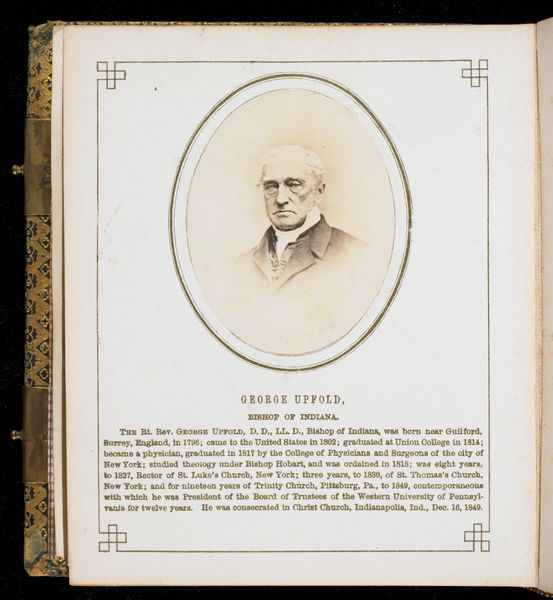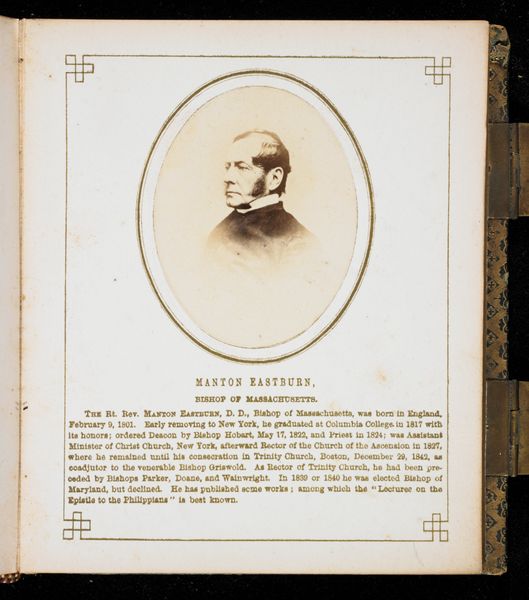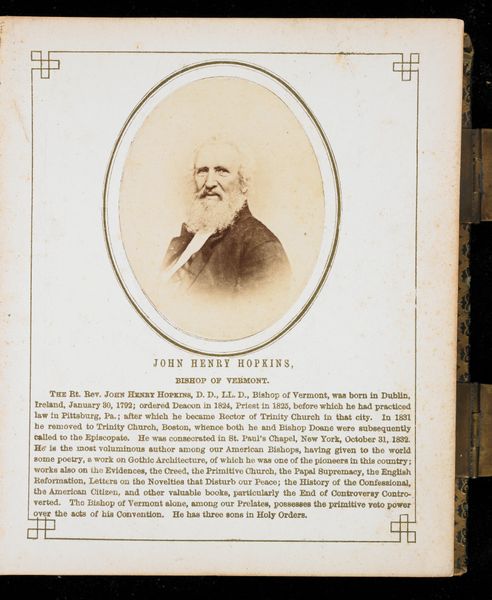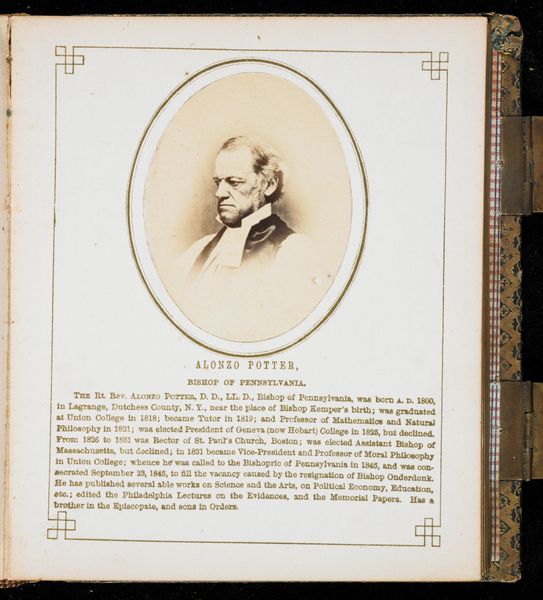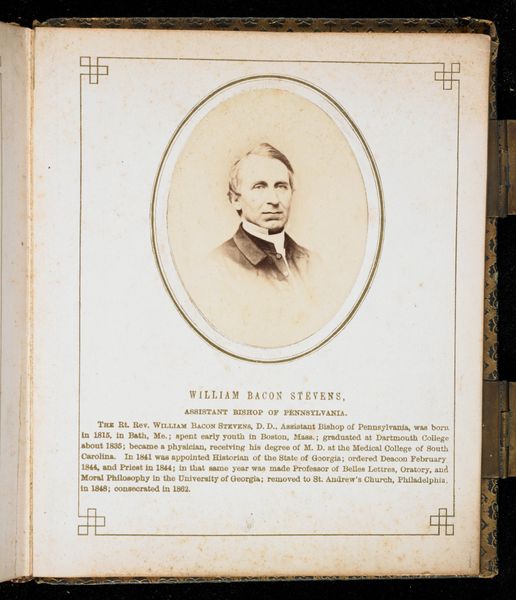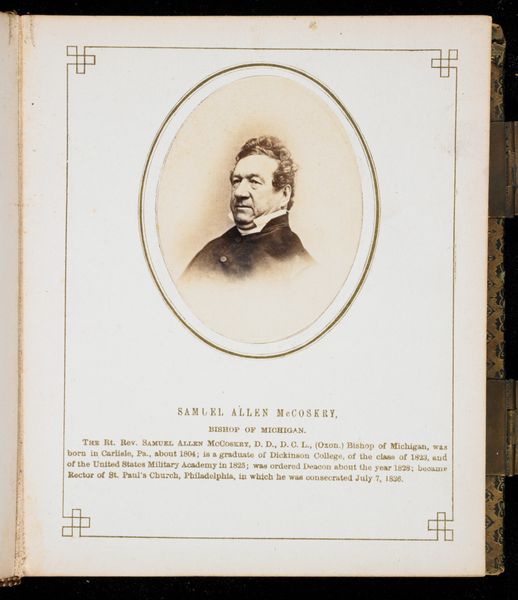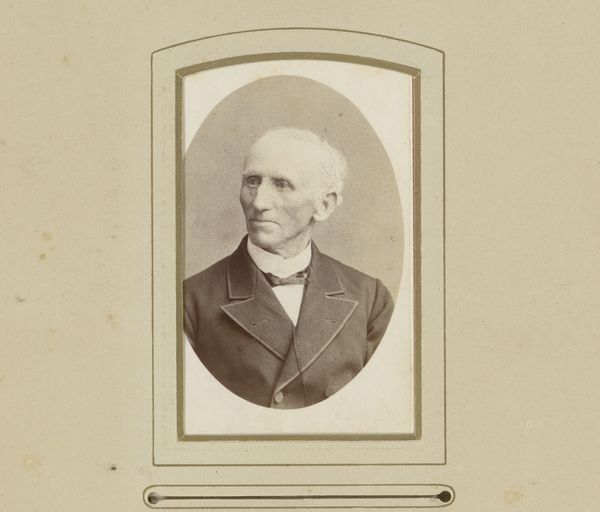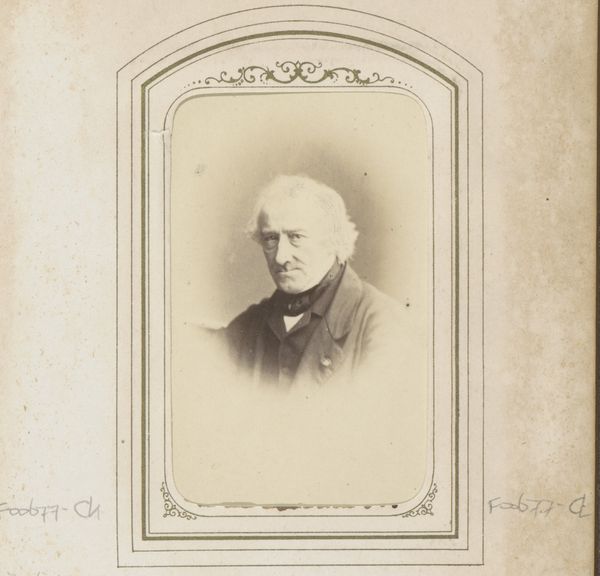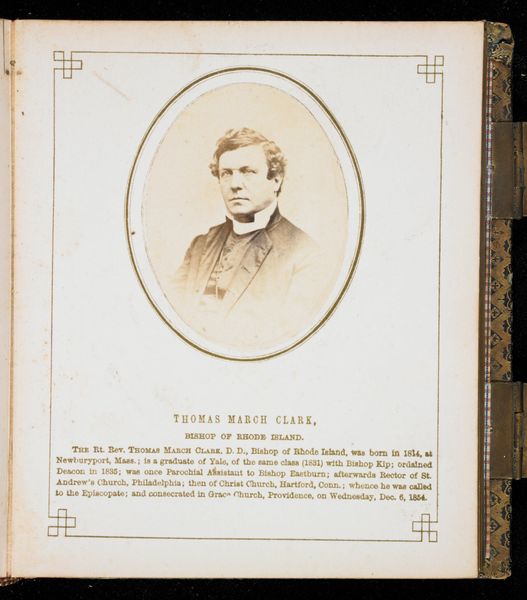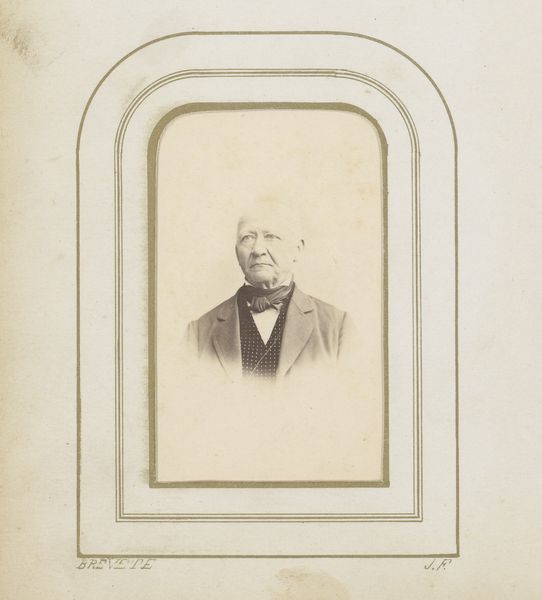
albumen-print, photography, albumen-print
#
albumen-print
#
portrait
#
16_19th-century
#
photography
#
united-states
#
albumen-print
Dimensions: 2 3/4 x 2 1/8 in. (6.99 x 5.4 cm) (image)5 3/4 x 4 3/4 in. (14.61 x 12.07 cm) (mount)
Copyright: Public Domain
Curator: Today, we're looking at an albumen print by Jeremiah Gurney, dating back to 1862. The artwork, titled "Charles Pettit McIlvaine," is currently held at the Minneapolis Institute of Art. Editor: My initial response is one of austere dignity. The oval framing and sepia tones lend a sense of formality, but there’s something melancholic in the subject’s gaze. It speaks of a life lived during times of turmoil, the Civil War no doubt shaping its perception. Curator: Precisely. Focusing on the composition, observe how the light delicately models McIlvaine's face. Gurney skillfully utilizes the tonal range of the albumen print, capturing fine details in the Bishop’s features, softened by the very tight cropping. Notice the stark simplicity of the geometric borders. Editor: Setting it against its historical backdrop, consider Bishop McIlvaine's role. As a prominent religious figure during the Civil War, he actively supported the Union cause. This image, then, is not just a portrait but a representation of power, faith, and a nation divided. The gravity of the period undeniably informs the image's overall mood. There are details available about the artist Jeremiah Gurney in the printed inscription, suggesting that both Gurney and McIlvaine understood the historical resonance that the print would have. Curator: Agreed. Structurally, the photograph employs classical portrait conventions. The restrained pose and minimal background contribute to a sense of timelessness, but are nonetheless in keeping with photography practices of the time. Editor: But the albumen print itself as a material object has so much to say here. Its relative inexpensiveness enabled wider circulation in a way other methods did not. The formal details speak of stability in the face of extreme tension within the context of a bloody and prolonged conflict, offering a means for disseminating images to inspire others during the crisis. Curator: A persuasive reading. Looking at the work through the lens of its formal qualities and historical situation deepens our understanding. Editor: Absolutely. By intersecting art history with social context, we get a richer sense of the Bishop’s presence and influence at a critical juncture in United States history, as well as appreciate this particular approach to image production as a form of documentation and as an artifact of this precise time.
Comments
No comments
Be the first to comment and join the conversation on the ultimate creative platform.
